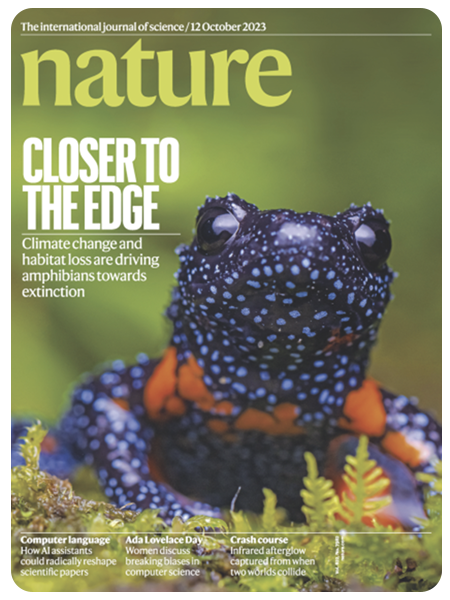amphibians
Re:wild is a global leader in amphibian conservation.
Re:wild led a global study that helped us identify the geographic regions with the most threatened amphibian species so we can prioritize the safeguarding of these places.
Amphibians absorb oxygen and water through their skin. As predator and prey, they play a critical role both in controlling pests and ensuring the health of other species. They are sensitive to even small changes in their environment, making them important bellwethers for ecosystems that may be in trouble. Along with our partners, Re:wild is taking actions to protect and recover amphibian populations through:
habitat protection and restoration
moving species to new locations, away from threats
assisted reproductive technologies and biobanking
conservation breeding programs
disease mitigation
41% of amphibian species are threatened with extinction.
These declines are driven by habitat destruction, disease, climate change and over-exploitation.
Salamanders are the most threatened amphibians.
Help protect and recover amphibians
$5: 1 week of food in a conservation breeding program
$20: 1 swab to check for disease infection
$50: 1 IUCN Red List assessment for 1 species, guiding actions
$100: 1 day in a school teaching kids about local amphibians
$500: 1 expert for 1 day on an expedition for “lost” amphibians
Re:wild's leadership in protecting amphibians
Re:wild is home to the Global Amphibian Assessment and the Amphibian Red List Authority, the branch of the IUCN SSC Amphibian Specialist Group (ASG) that manages amphibian data for the IUCN Red List of Threatened Species. We are a leading convener of the Atelopus Survival Initiative, in partnership with the IUCN SSC Amphibian Specialist Group, Amphibian Survival Alliance, Amphibian Ark, and many others.
In 2022, Re:wild completed the second Global Amphibian Assessment (GAA2): a massive collaborative effort a decade in the making, with participation from more than 1,000 amphibian experts. The GAA2 evaluated the extinction risk of 8,011 (94%) of the world's known amphibian species for the IUCN Red List.
The GAA2 was a massive collaborative effort 8 years in the making.
We engaged 1,000+ experts around the world.
Our experts assessed 8,000+ amphibian species.
What were the results of the GAA2?
We learned that habitat destruction and degradation, overexploitation for the pet trade, infectious disease, climate change, pollution and invasive species together threaten nearly half of all 8,000 known amphibian species with the risk of extinction. As these threats drive amphibians closer to extinction, we also risk losing the wildlife that feed on them, and the balance they bring to critical ecosystems.
What are we doing with the data?
Re:wild is scaling up amphibian conservation. Using the GAA2 results, we've built a model for high-impact conservation that will help drive action on the ground through our local partners. Re:wild is strengthening existing coalitions and enabling the creation of new ones with the ultimate goal of reversing the downward trend away from extinction, and recovering amphibian species worldwide.

The State of the World's Amphibians
The State of the World's Amphibians is a new report by Re:wild, the IUCN SSC Amphibian Specialist Group, and Synchronicity Earth, that summarizes how amphibians are faring, the pressures on them, and the solutions needed to scale up their conservation and create BIG impact.
Conservation works
When ecosystems are intact and healthy, species can move freely and adapt and evolve. By protecting and restoring the wild amphibians depend on, we can help them thrive.
Among the most significant revelations from the GAA2 study is confirmation that amphibian species are recovering where critical habitat protection has already taken place.



